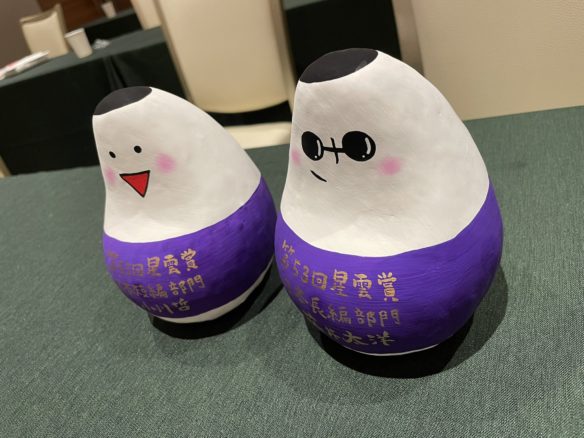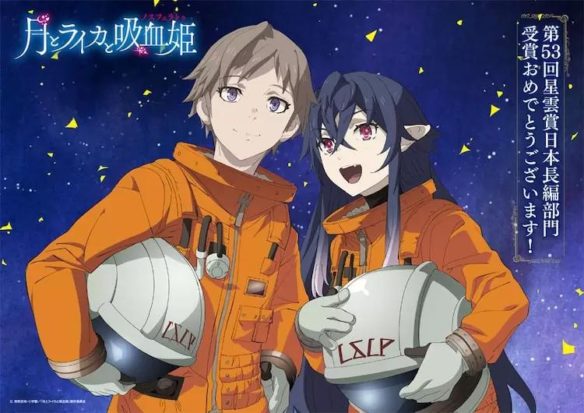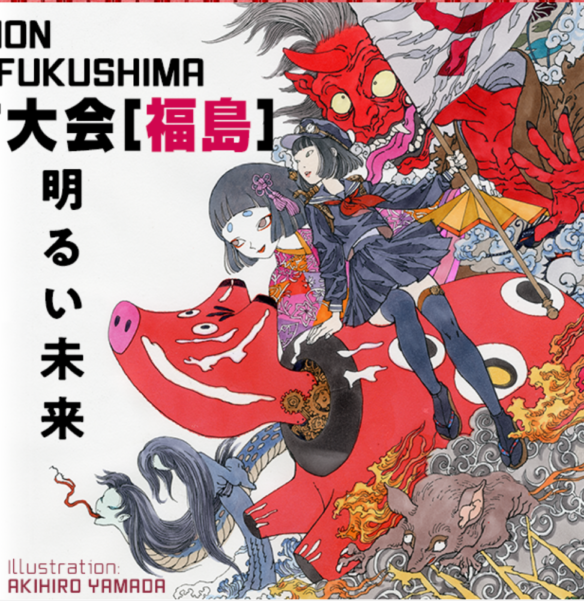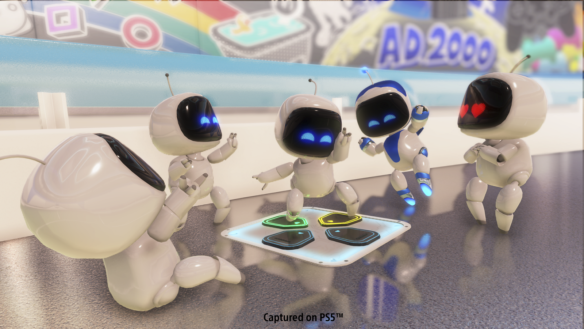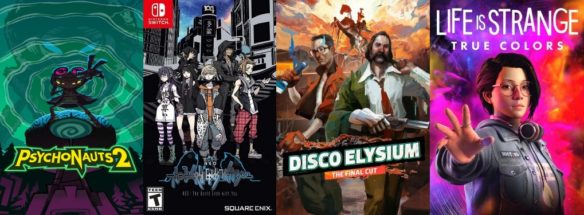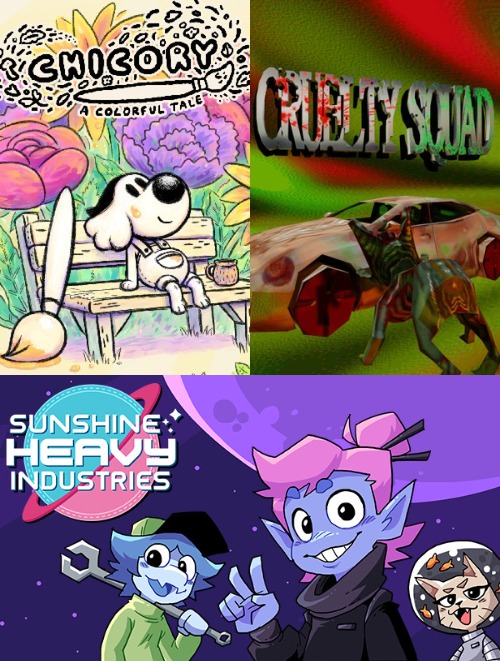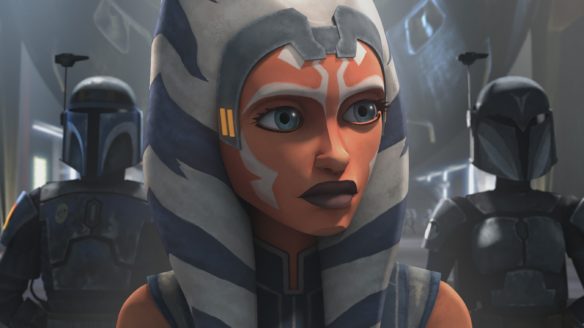
By N.: An odd list to publish on the literal final day of Hugo nominations, to be sure. Being honest, this wasn’t planned. Seeing Journey Planet’s list of Graphic Novel contenders made me realize that there wasn’t an equivalent list for TV shows, which have historically been a massive part of Dramatic Presentation but are harder to keep track of in the age of streaming. Thus, here’s an impromptu list of the Best SF/F Television Episodes of 2024 (in this fan’s opinion). If it’s too late for your nominations, consider this a general recommendation list. Perhaps one will come out earlier in 2025.
A few ground rules: all of these came out in 2024. One episode or two-parter per series, to provide a wider view of the best that genre TV has to offer. If you would like to seek these shows out, I suggest using JustWatch to find out where they stream in your region.
(WARNING: Descriptions are written to exclude spoilers, but clips are included that likely do have them. View at your own risk.)
10. Doctor Who – “73 Yards”
Written by Russell T Davies
Directed by Dylan Holmes Williams
With Russell T. Davies’ return to the show, a new Doctor and a new start on Disney+, it’s business as usual for the time lord—growing pains as the show finds its footing. “73 Yards,” in particular, has proven to be a particularly divisive installment, with much of its runtime focused solely on companion Ruby, as she’s terrorized by a mysterious woman who, by standing 73 yards (that’s 67 meters) away from her, begins to dismantle her life and turn everyone against her. To those that enjoy the episode, this is an inventive break from the formula—a quiet, eerie little quasi-ghost story that inserts a bit of existential horror into the British institution, and demonstrates that the show’s secret weapon remains its variety.
9. Evil – “How to Survive a Storm”
Written by Rockne S. O’Bannon & Anju Andre-Bergmann
Directed by John Dahl
This CBS/Paramount+ religious supernatural thriller from the The Good Wife creators never amassed a large viewership, but did have a dedicated watcherbase of fans that fell in love with the series for its deft mix of monster-of-the-week antics, humor, genuine emotion and genuinely scary horror. In its fourth and final season, possibly the best encapsulation of Evil’s underrated, shaggy appeal is its tenth episode, where a hurricane hits New York, against the backdrop of which spring demonic attacks, revelations, and a shocking demise. Though late in the series’ run and heavy in its consequential plot turns, “How to Survive a Storm” may be worth seeking out to understand what many viewers were missing.
8. Star Trek: Lower Decks – “Fissure Quest”
Written by Lauren McGuire
Directed by Brandon Williams
Lower Decks weathered the initial turbulence of cynicism from Trekkies and came out the other side as among the most beloved of the modern Trek shows, with its premature cancellation inspiring a wave of mourning. Thankfully, the show went out on a high note, its penultimate episode being a celebration of the entire franchise. Following Brad Boimler’s clone William—now captain of his own ship—as he attempts to close interdimensional rifts and save the multiverse, “Fissure Quest” gives audiences a treat by surrounding him with alternate versions of fan-favorite Trek characters (including Jolene Blalock returning to acting as T’Pol, and Garak and Bashir as the married couple fans only dreamed of). Rather than a pure fanservice-fest, this is also a legit Trek story, representative of Lower Decks’ ability to navigate the divide between playful and earnest.
7. Star Trek: Prodigy – “Ouroboros” (Parts 1 and 2)
Written by Kevin Hageman & Dan Hageman & Aaron J. Waltke
Directed by Sean Bishop & Ruolin Li
The other show that stands above the rest of modern Trek, Prodigy is the yin to Lower Decks’ yang—while the latter is an animated show made for adults that treats Trek with a lighter touch; Prodigy is an animated show that handles darker themes in a way both kids and adults can enjoy (plus the inclusion of Janeway and a well-written Wesley Crusher don’t hurt). Its two part second season finale (and likely series finale) sees series antagonist Ascensia launch a desperate all-out attack on the Federation, which gives way to a larger looming threat. Among the action-packed family thrills in these last two episodes, the most thrilling is watching our central group of alien misfits, who started at the bottom rungs of the universe and who we’ve watched struggle throughout the series, finally achieve their spot as heroes.
6. Fallout – “The Beginning”
Written by Gursimran Sandhu
Directed by Wayne Yip
Fallout had a much tougher path to follow as a video game-to-TV show adaptation than The Last of Us, being based on a larger, long-running series more nebulous in its narrative than the latter’s more linear, cinematic telling. This makes the series we got all the more impressive, a show that faithfully translates its source material’s idiosyncrasies while simultaneously expanding on its post-apocalyptic setting. The finale of the first season, where Lucy is finally able to reunite with her father, provided key answers about said world in an emotionally-shattering hour that completely shifted and redrew the dynamics between the characters (With some particularly stunning revelations at play) and complicated the series’ central factions, cementing the show on the list of proven video game adaptations.
5. Agatha All Along – “Death’s Hand in Mine”
Written by Gia King & Cameron Squires
Directed by Jac Schaeffer
The MCU spinoff centered around WandaVision fan-favorite Agatha Harkness was largely seen by fans as a wholly average side excursion in the universe—save for its seventh episode, which would easily rank high on a list of the MCU’s best TV episodes. Centered around coven member Lilia Calderu, who experiences time non-linearly, as she undergoes her Witches’ Road Test, “Death’s Hand in Mine” is anchored by a bravura performance from theatre legend Patti Lupone as Lilia. It takes a lot of elements to pull off an “unstuck in time” premise, and even more to pull off one with emotional resonance for a character we’ve spent relatively little time with. As with Lilia’s memories, this episode makes every second count.
4. House of the Dragon – “The Red Dragon and the Gold”
Written by Ryan Condal
Directed by Alan Taylor
With changes to the book that may not bode well for future seasons, controversial turns of character, and an overall sense of wheel-spinning, House of the Dragon’s second season has been controversial, seen as a drop in quality from the first among fan circles—least of which from the writer of the book himself. The fourth episode of the season was different, kicking the plot off into high gear with political intrigue that recalls GOT at its height, building tensions among the characters that culminates in one of the most indelible action sequences in the franchise’s history—a kaiju battle with dragons. Even those who were down on the season as a whole couldn’t deny this installment.
3. Arcane – “Pretend Like It’s the First Time”
Written by Amanda Overton
Directed by Armand DeLord & Bart Maunoury
Netflix’s adult animation League of Legends adaptation is as much characterized by its stunning animation and complicated characters as it is by the brutality of its world. This last aspect gets turned on its head in what opens up Part 3 of Arcane’s final season, in which Ekko wakes up in an alternate timeline—-one where Vi is long dead, but Powder has remained Powder and Zaun is in an apparent period of prosperity. As Ekko finds himself experiencing peace for the first time, Jayce suffers through an even worse future. While the second season of Arcane could feel condensed and rushed at points. “Pretend Like It’s The First TIme” excels as a “what-if” story that’s as beautiful as it is tragic, letting both Ekko and the audience live in a world that ultimately can’t last.
2. Interview with the Vampire – “I Could Not Prevent It”
Written by Kevin Hanna & Rolin Jones
Directed by Emma Freeman
A remix of Anne Rice’s Vampire Chronicles novels that puts the queerness front and center, Interview may have been the most consistent genre show of 2024, so much that it was hard to choose between this episode and “Don’t Be Afraid,. Just Start the Tape.” The edge, though, has to go the the second season’s penultimate episode, in which the show finally depicts that horrible event that those familiar with this story are all too familiar with. As Lestat makes his grand return, Interview sows doubt on the reliability of the story it’s been presenting us, all while hiking up the tragedy to maximum level.
1. X-Men ‘97 – “Remember It”
Written by Beau DeMayo
Directed by Emi Yonemura
X-Men ‘97 was a magic trick (or rather a mutant trick?); a sequel series to a 30-year-old cartoon that avoided easy nostalgia for a tense and layered political story that elegantly repackaged the themes of the comics for an older audience, told at an all-too-perfect time. This is best encapsulated in its fifth episode, in which the now Magneto-led X-Men travels to mutant sanctuary nation Genosha on the eve of its admittance to the UN. What is meant to be a moment of celebration winds up devolving into sheer horror, tragedy, and loss. A beautifully stunning half-hour of television, “Remember It” is the best SF/F episode of 2024.






